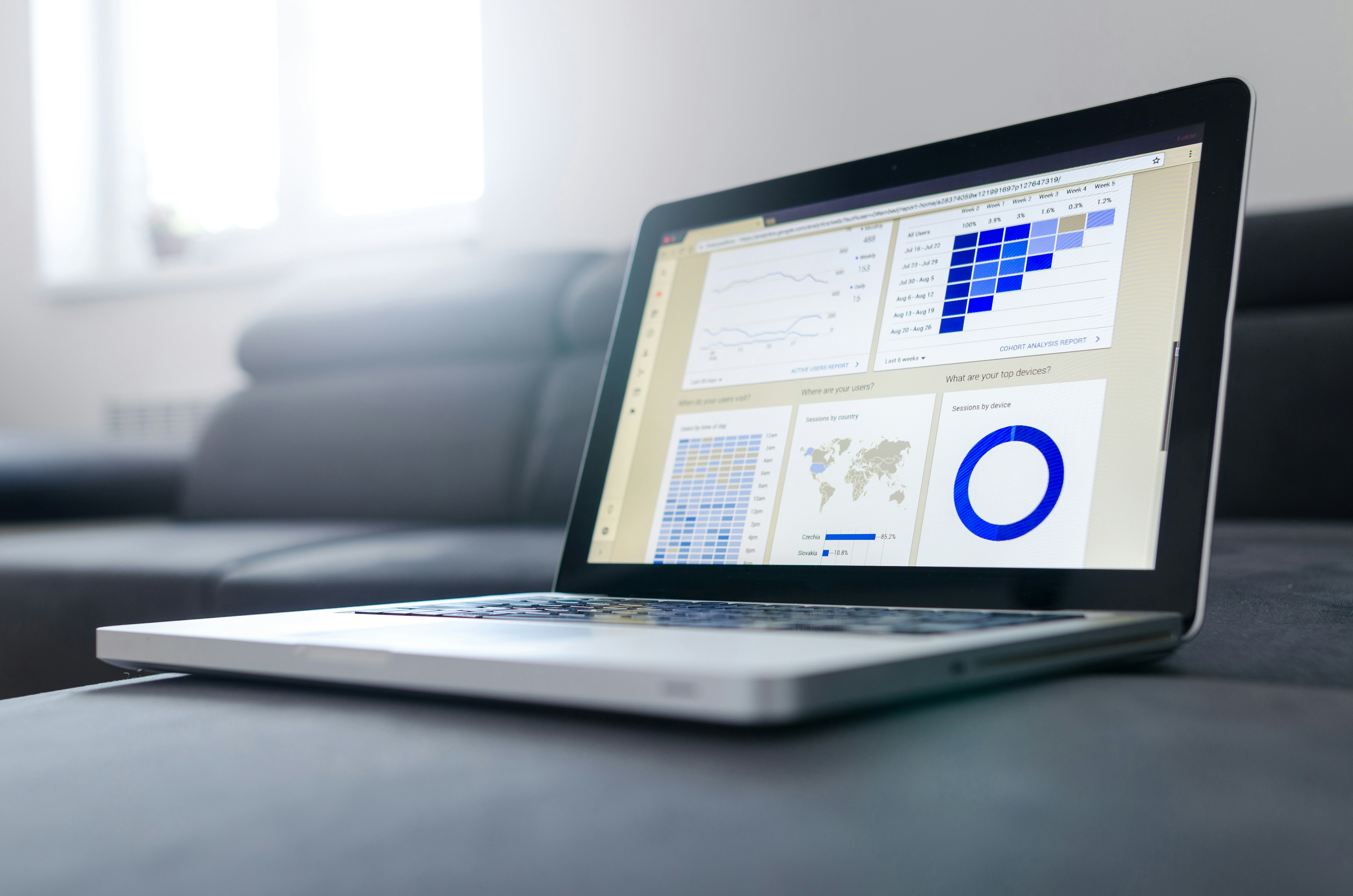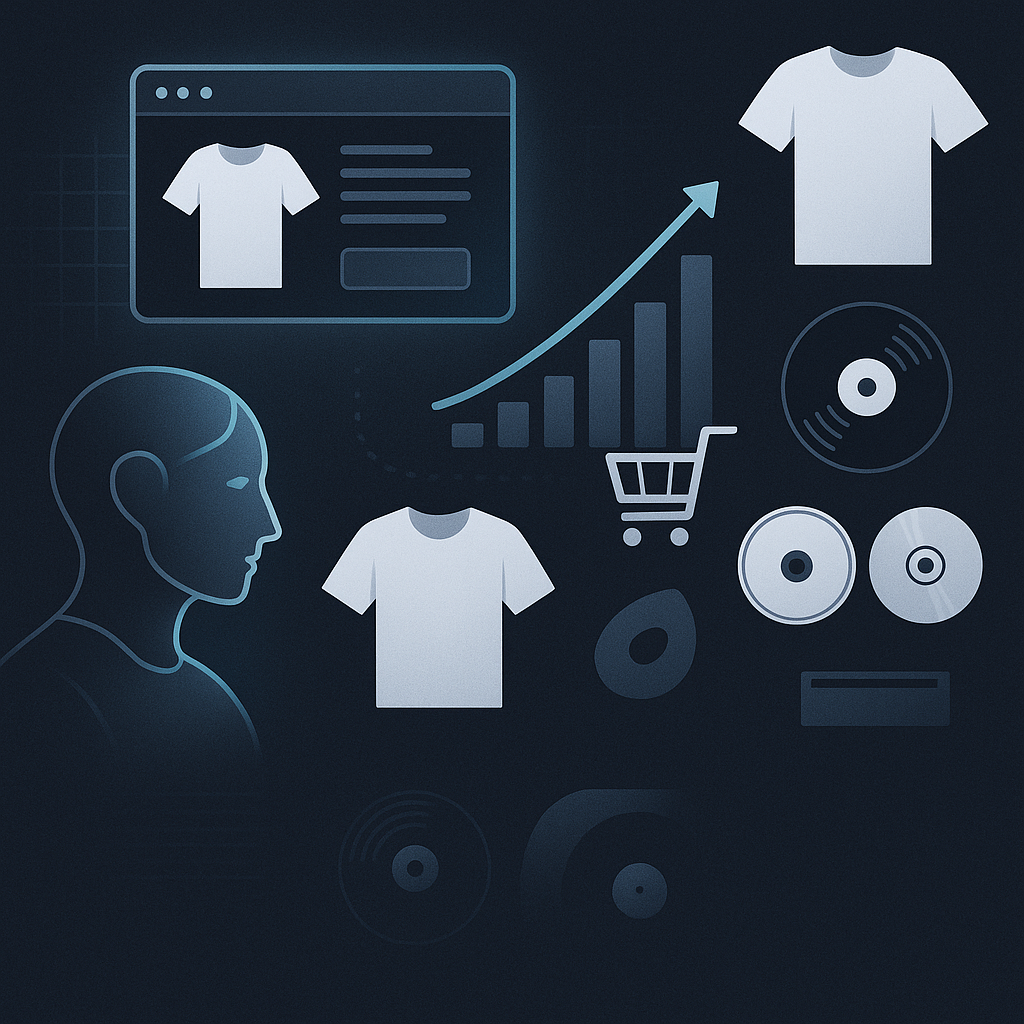5 Ways Artificial Intelligence Will Transform the Future of E-Commerce
October 8, 2024

E-commerce has long been an early adopter of cutting-edge AI technology. Even before ChatGPT launched in 2022, retailers were quietly transforming the shopping experience. For years, they’ve embraced AI-driven chatbots to handle customer service, generate stunning product images, customize consumer-specific landing pages, and craft precise product descriptions.
Today, thousands of e-commerce brands leverage tools like Rebuy to greet each customer with a personalized shopping experience and product recommendations tailored to their historical shopping data.
But these innovations are just the beginning. The rapid evolution of AI promises even more dramatic shifts in the coming years. By 2030, the e-commerce landscape will be almost unrecognizable, redefined by AI in thrilling new ways.
We've gathered insights from leading experts in e-commerce, AI, and mixed reality to envision a future where shopping is more personalized, efficient, and immersive than ever before. Peek into the future of e-commerce as we explore five exciting predictions for this new world of AI-enabled e-commerce.
Prediction #1 - You’ll shop with an AI personal assistant
Today: 84% of e-commerce businesses are either actively integrating AI solutions or prioritizing them in their upcoming roadmaps, while one in five consumers are willing to purchase goods from a chatbot. You’ve likely already interacted with bots during your online shopping journeys, whether you realize it or not.
By 2030: Soon, we will train personalized AI shopping assistants with our purchasing data and customized prompts to recommend products across various services. These assistants will be cross-platform, making recommendations and purchases on our behalf across stores and platforms like Amazon, Temu, Shopify, Etsy, Facebook Marketplace, OfferUp, Pinterest, and more. They will access our historical data (with the requisite permissions of course), recognize our previous purchases, and predict what we might need next based on this information.
All of this will result in an AI assistant that we’ll trust to proactively make purchasing decisions on our behalf without needing our approval. Just set a spending budget, train your assistant on your preferences and what is within their permission to shop for on your behalf, and let it go on a (controlled) shopping spree.
Some companies may already be building toward this inevitable future. For example, in June 2024, AI startup Daydream raised $50M in seed funding to pursue providing customers with personalized shopping results by using generative AI, machine learning and computer vision.
Prediction #2 - You’ll preview products in hyper-realistic, generative AI and mixed reality
Today: When you’re shopping for a product today, if you’re like me, one of the first things you do is cycle through the photos of the product to get a better sense of what you’re purchasing. If it’s an apparel item, you’ll see photos of models wearing the item. If it’s a household good you may see the product in a staged environment, in a video, or, if you’re lucky, you may have the ability to launch a 3D preview of what the product might look like in your own home.
By 2030: Current 3D product previews are primitive compared to where we’re headed. Over time, e-commerce sites will shift to hyper-realistic, film-quality videos of products being used by everyday people. OpenAI’s Sora and Black Forest Labs’ Flux have already given us a glimpse of what will be possible in generative photo and video in the near future. When this generative capability is integrated into platforms that customers are already familiar with, it will become easier than ever for them to envision themselves interacting with the product. Using mixed reality, customers will also be able to get up and personal with the product, virtually hold it in your hands, and take the guesswork out of online purchasing.
“Consumers will soon be accustomed to seeing themselves wearing your product or testing it virtually in their space before buying it,” says Shep Bryan, founder of Galaxy Brain AI and generative AI specialist. “Generative try-ons are going to be huge. Think of how e-commerce conversion rates will be impacted when customers can see how that new hoodie looks on them in their own photos. In the future, every brand will have their own branded image/video generation models that customers can use to virtually try out a product.”
Prediction #3 - You’ll create your own one-of-a-kind products with generative AI
Today: Speaking of online purchases not quite living up to your expectations… online shopping has always been a gamble in terms of finding the right item, size, fit, or color. We’ve all experienced that disappointment when an online purchase doesn’t quite meet our expectations, resulting in a dreaded return (or, if you’re like me, a growing pile of “things I should return” in the corner of your closet).
By 2030: Instead of hoping an e-commerce store has the perfect product in the perfect size or fit, future stores will let you custom-generate the exact item you want. This could be as simple as fully personalizing a t-shirt or as complex as manufacturing an item that is fully one-of-a-kind and unique to you. This currently exists to a certain degree, but is limited by print-on-demand/product-on-demand manufacturing capabilities, which are improving rapidly, but still ample room for improvement. In this future, fashion will become even more expressive as more and more people will create their own items that no one else has in their closet. This will also create a new income stream for many consumers by allowing others to purchase their AI-customized designs, and new licensing revenue streams where licensors of valuable IP like artists, sports teams, and athletes will license their IP for these kinds of uses by consumers. The line between retailer, creator, and consumer will blur, just as the line between media provider, creator and user has blurred with the proliferation of social media.
"New AI building blocks have significantly reduced the barriers to entry for creating physical products," says Danny Quick, founder of Fabric.club which allows customers to prototype and produce their own AI-generated sneakers. "We're witnessing the rise of a new generation of creators who leverage AI to build brands with incredible efficiency. When you no longer need millions of dollars to design, create, and market a product, creators can explore much more experimental and niche ideas that speak to their audience. The era of one-size-fits-all is coming to an end, and the next wave of brands will build bespoke products for like-minded audiences."

Prediction #4 - You’ll take recommendations from both real creators and virtual AI fashion influencers
Today: 59% of social media users say they have purchased a product after discovering the product via an influencer. Influencers and creators are major drivers of e-commerce purchases, shaping our fashion sense and brand preferences.
By 2030: Virtual influencers have been a growing trend for years now, one of the most notable in the U.S. being Lil Miquela with 2.5M followers on Instagram. To date these virtual influencers have largely acted as part social experiment, part billboards for brand sponsorships. In the future, we expect this trend to cross over into the mainstream and result in a rise of AI-powered fashion influencers. They’ll have access to large amounts of data and will post on their Instagram and other accounts, recommending the latest looks and products to their followers. You’ll curate the virtual influencers you follow based on which best match your personal style, and they’ll become the new tastemakers that influence your fashion sense. In the past, these virtual influencers have been backed by studios of designers and creatives. AI will unleash this ability to generate visual imagery at scale and to make smart recommendations to their followers. This expansion of AI-driven influencers will only bolster the power of real creators and their followers, as the cross promotion between AI influencers and real creators will bolster both networks and their ability to drive engagement.
"Every creator is a storefront and affiliate marketing is already a major driver of all e-commerce sales,” says Daniel Abas, Founder of the distributed commerce platform TAGS. “In the future, you can imagine AI responses suggesting products, as well as hyper targeted networks of AI-generated social media influencers recommending purchases to their loyal followers en masse.”
Prediction #5 - Your shopping will be more sustainable thanks to AI handling supply chain behind-the-scenes
Today: Consumers already prefer sustainable brands and become more loyal to a brand that shares their environmental priorities. This consumer behavior has pushed brands to put the environment in the spotlight, leading to more transparent and sustainable business practices.
By 2030: With AI, online shopping will become even more environmentally friendly by optimizing supply chains to reduce waste and minimize environmental impact. AI will identify opportunities for resource optimization and track the sustainability credentials of products and providers in the supply chain. This will empower consumers to make more informed purchasing decisions that align with their ethics and values.
It’s clear that most of our world will be transformed by AI in the near future, and e-commerce is at the forefront of this innovation. In the coming years, expect your shopping experiences to become 'like magic'—more personalized, efficient, and immersive than ever before.
As for the companies and people working behind the scenes, the shifts are happening: AI-driven imagery, video, product descriptions, site optimizations, and marketing execution is not a thing of the future- it is currently happening in real time. The e-commerce companies that will win, will be the ones that embrace AI behind the scenes to optimize their businesses.
Five Predictions for the Future of E-Commerce:
- You’ll shop with an AI personal assistant
- You’ll preview products in hyper-realistic, generative AI and mixed reality
- You’ll create your own one-of-a-kind products with generative AI
- You’ll take recommendations from virtual AI fashion influencers
- Your shopping will be more sustainable thanks to AI-powered supply chain
Contact Us








